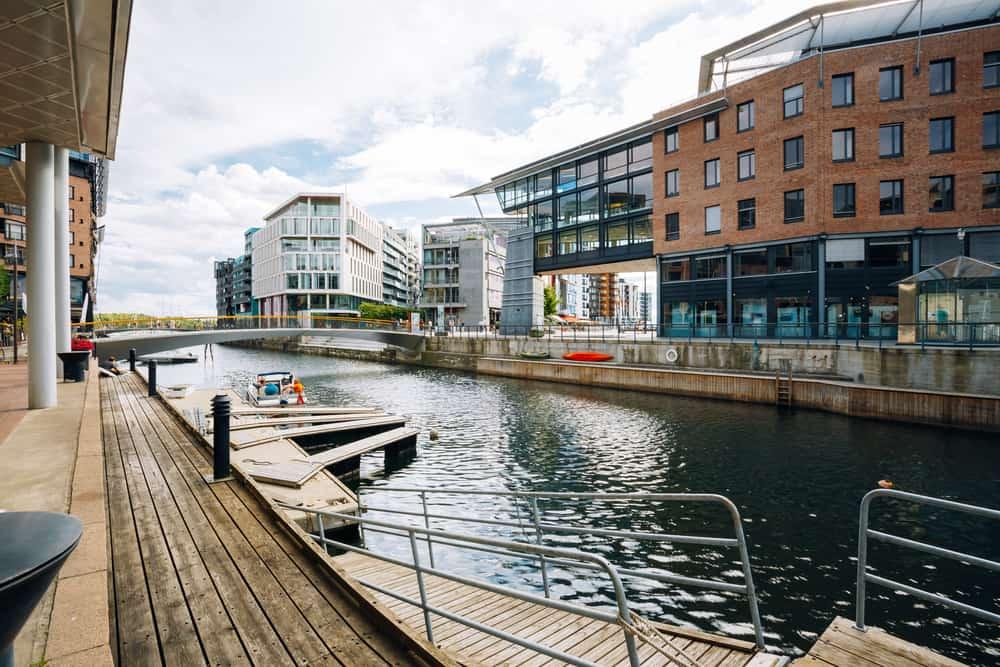2Oct2017
Corporate Social Responsibility (CSR) is likely to become a key factor in building competitive advantage in the future, but companies must find ways to bridge the gap between their CSR image and the competitive advantage it confers, according to a survey conducted by market research and consulting firm Kantar TNS.
In a survey of firms in Finland, Estonia, Sweden, and Norway, corporate decision-makers concluded that CSR will play an important role in improving future competitiveness and profitability if programs are skillfully implemented and the outcomes are effectively communicated.
To test the corporate temperature on the issue of CSR, Kantar TNS explored the opinions of respondents from the Nordic and Baltic region.
Disconnect between CSR image and competitive advantage
The data revealed that not only did most firms in the survey see CSR as a central part of their purpose and mission, most also said it played a major role in strategic focus and day-to-day decision-making.
However, when asked to assess their own companies’ CSR performance using a CSR index*, many decision-makers’ ratings revealed a gap between perceived CSR image* and related competitive advantage*.
The survey findings indicated that overall, business leaders saw their companies as having a rather low CSR index – 35 on a scale of -50 to +150. Additionally, on average researchers found a notable gap between the perceived CSR image (43) and related competitive advantage (26).
The difference was more pronounced among companies not listed on the stock exchange (index of 32 with a 20-point gap between image and competitive advantage) than among listed companies (index of 37 with a 14-point variation between image and competitiveness).
According to Sirkka Paronen, Head of Customer Experience Research at Kantar TNS, while the overall picture pointed to a disconnect between CSR image and competitive advantage, there were variations among industries.
“In the forestry industry, CSR image rather high, but the differences between each company and others within the same industry was very low. So, they have not got a competitive advantage. Either they have not communicated what they have done or they haven’t done enough,” she added.
Paronen noted that in general, companies operating in heavy industry, as well as banking and finance, also tended to have lower overall CSR indices. While the ICT sector had some stars, firms in that field also did not fare well, although they generally outperformed the banking sector.
High peer evaluations for standout firms
The researchers pointed to KONE and St1 as examples of companies that respondents ranked highly when asked to evaluate firms appearing in a Top 50 ranking by business weekly Talouselämä.
Respondents gave lifts and escalator giant KONE a CSR index of 70, with 78 for image and 63 for competitive advantage. The energy group ST1 received 58 on the CSR index, with a score of 64 for its image and 51 for competitiveness.
Kantar TNS speculated that both Kone and ST1 may have been better able to demonstrate a high level of commitment to CSR programs – and they may have been more successful at communicating CSR issues as part of a strategy.
“KONE seems to be thinking outside the box, their language suggests that they want the best for people. They’ve got the tone right,” explained Data, Insight, and Consulting Director Päivi Kauppinen.
“ST1 has really been able to surge forward. They may have been focusing more than others on being active,” she continued.
Despite the gap between perception and performance, business leaders almost overwhelmingly felt that CSR was a crucial aspect of corporate purpose and mission – 91% said that it was a very crucial or quite crucial aspect of the mission.
Asked how CSR is currently reflected in their companies’ strategic focus areas, 72% said that it was very strongly or quite strongly evident. Some 70% said that CSR was either very strongly or quite strongly represented in their companies’ day-to-day decision-making.
Survey respondents also saw CSR playing a greater role in gaining competitive advantage in the future than it does today. Meanwhile although said that CSR contributed to current profitability, felt that CSR would contribute to increased profitability in the future.
CSR concept evolving, emerging call for metrics
Kantar TNS researchers drilled down further into the findings by conducting qualitative interviews with five decision-makers representing finance, retail, energy, services, and mixed services. The conversations revealed a view that the concept of CSR is changing as its importance grows.
“It is now becoming more multidimensional, whereas previously it had quite a narrow definition. It is expanding beyond merely environmental issues. No one knows what it will look like in the future,” Kauppinen said.
“The role of CSR is also fractured. Different companies have different views of how it should be implemented. This also varies by industry. It seems more natural in some industries than in others, for example, in healthcare,” Paronen added.
Evaluating CSR in the business context, there was clear agreement among the decision-makers that CSR has transitioned from merely being a tool for risk management to becoming a channel for identifying new business opportunities.
Like most of the Nordic respondents polled separately, interviewees also concurred that CSR could play a role in gaining competitive advantage and boosting profitability and that this had already been the case to some extent. However, they felt that its role in doing so would increase in the future.
The discussants asserted that it is critical to communicate with various stakeholder groups – customers, investors, suppliers, current and prospective employees — about their companies’ CSR programs.
“Some employees want to work in a company that does meaningful things and acts responsibly. There still seems to be some modesty in terms of communicating directly about CSR initiatives. Finnish companies generally tend to want to make sure that everything is 100% in order before they communicate,” Paronen observed.
The face-to-face discussions revealed that business executives were stymied by the question of how best to directly measure the impact of CSR initiatives on operations. Environmental, health and safety metrics provide some options for investors and suppliers to apply performance indicators.
However, the media and other stakeholders may be better served by other kinds of quantifiable data that provide a clearer picture of a company’s CSR credentials and make it easier for markets to measure their true capital in this increasingly important area.
ADDITIONAL RESOURCES
Definitions:
- CSR index* – a measure of the company’s ability to differentiate in terms of CSR programs, and communicate its initiatives based on CSR investments.
- CSR image* – a company’s perceived commitment to CSR values and programs
- CSR competitive advantage* – a company’s perceived competitive advantage arising from commitment to CSR values and programs
How the surveys were conducted:
Qualitative phase
Target group: top management and vice presidents, sustainability in large Finnish organizations
Data collection: 5 in-depth interviews in June – August 2017 (28.6. – 7.8.2017)
Quantitative phase
Target group: decision-makers and influencers of companies mainly in Finland, but also in other Nordic and Baltic countries (registers of Nordic Business Forum)
Data collection result: 380 completed web interviews in July – August (31.7. – 18.8.2017)


 by:
by: 